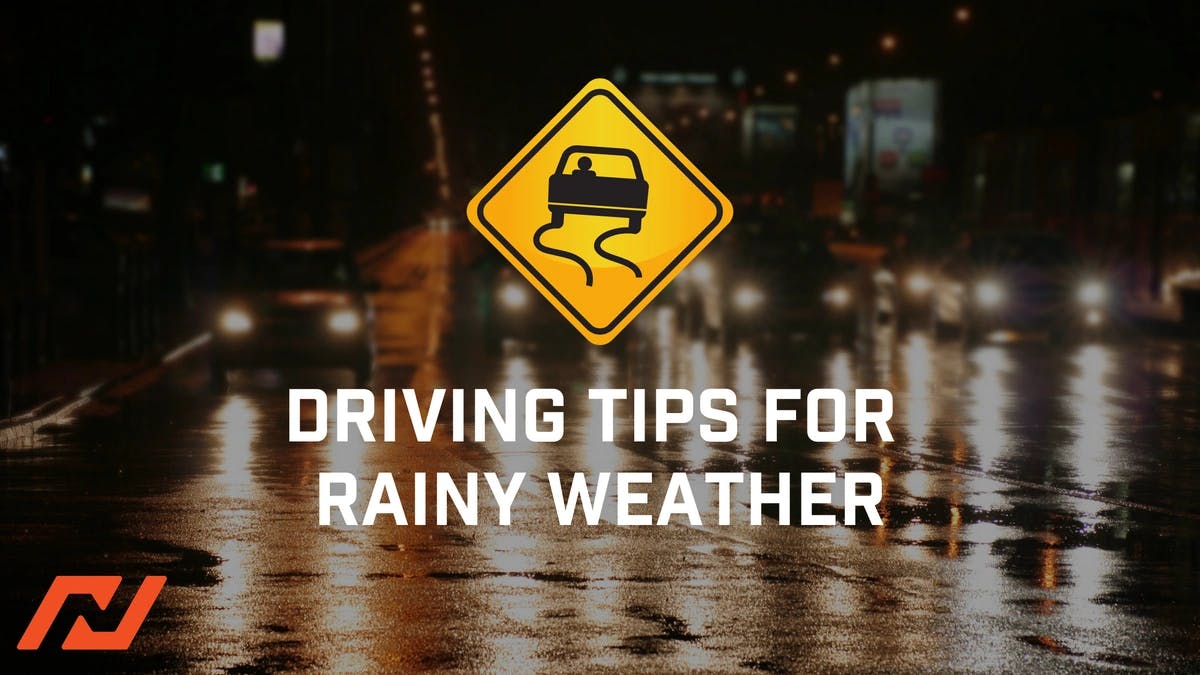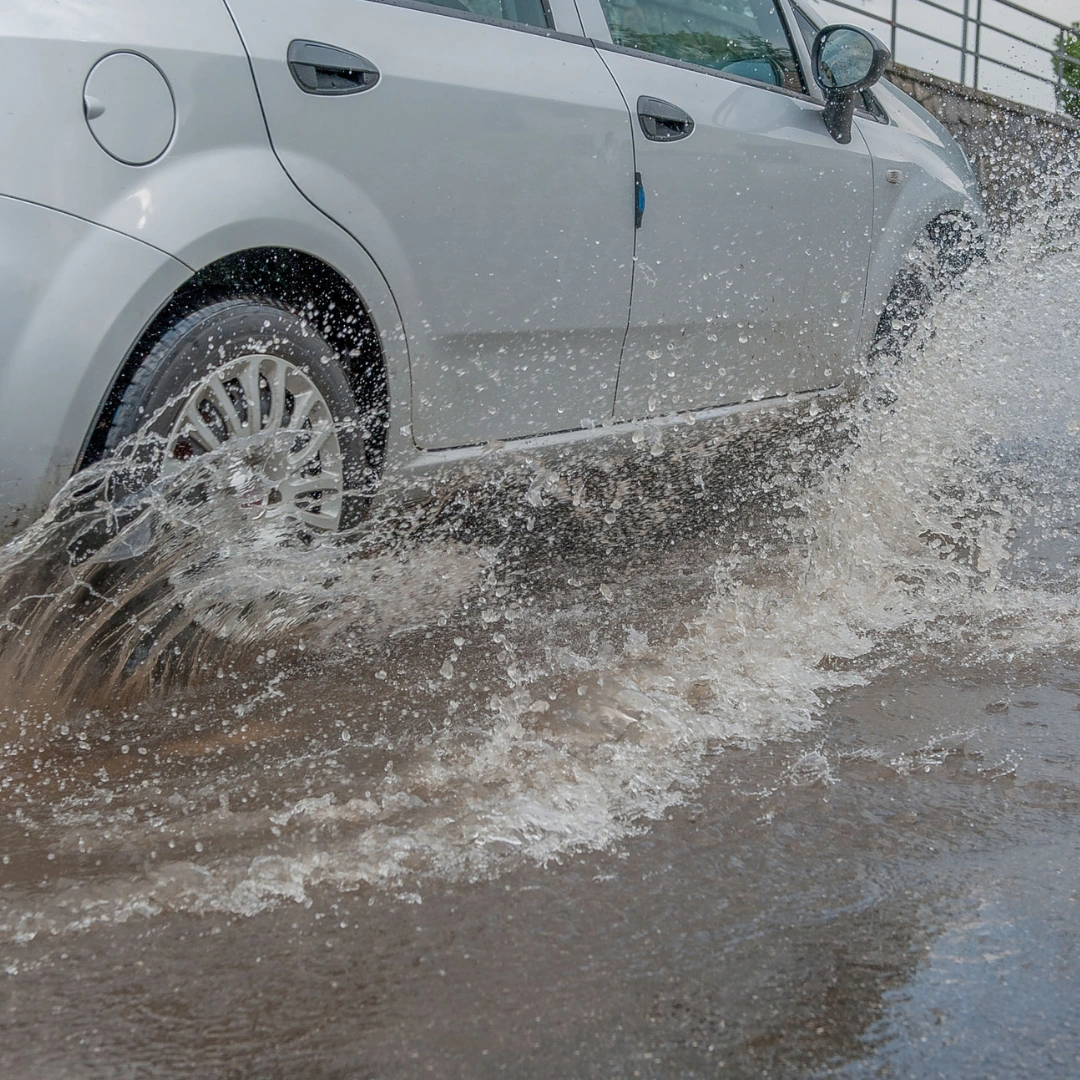The summer season is a time of warm weather and abundant sunshine, but it is also the time when sudden thunderstorms roll through the countryside.
In Texas, the rainiest months are April, May and June, so now is the best time to ensure you're prepared for wet roads and lack of visibility while driving.
When thunderstorms arrive, they can bring torrential downpours, hail and other hazards, reducing visibility to near zero and turning driving from pleasant to downright dangerous.
No matter where you live, it is important to prepare yourself, and your car, for those sudden summer thunderstorms. Watching the weather will get you only so far.
If you want to stay safe out there, you need to be ready for anything.
Rainy Weather Car Safety Tips
Clean the interior and exterior of your windshield on a regular basis
This is crucial as clear windows improve visibility, especially during sudden downpours. Regular cleaning helps remove dirt, dust, mud, smoke, fingerprints, grime, and other materials that can impair visibility.
Watch out for hazy buildup that could impair your visibility
Smokers should take extra precautions to keep this haze at bay. If your windows fog up, turn on the air conditioning or cold air in the car and aim the vents at the windows.
Test your headlights and taillights on a regular basis
This ensures that your headlights are pointing in the right direction, making it easier to see and preventing you from blinding other drivers. Regularly check to make sure none of your lights have burnt out, and replace dead lights immediately.
Turn on your headlights at the first sign of rain
This is not only for your visibility but also to make your car visible to other drivers. In some states, it's actually illegal to drive without headlights when it's raining.
Check your windshield wipers for damage and replace the blades as needed
Along with keeping your windshield clean, you can also improve your visibility in wet conditions by ensuring that your wipers are up to the job. Replace your wipers every year to prevent them from cracking, breaking, or not sealing properly when you need them most.
Slow down as weather conditions deteriorate
Wet roads reduce your traction, and slowing down reduces the chances of you skidding out, and will give you more time to react to emergencies. Wet roads can reduce your traction by about a third, so you should also reduce your speed by a third.
Maintain a safe distance between you and the car ahead
This is especially important in the rain, when your ability to stop may be hindered by the slickness of the road. Leaving space includes leaving an opening where you can escape quickly if necessary.
Make sure you have a fully-stocked emergency kit in your car
The emergency kit should include road flares or cones, an extra charger for your phone, and a basic first aid kit. It's also important to be prepared to react if you hydroplane or encounter deep or moving water.
Know your limits and abilities
If you are having trouble seeing the road ahead, and the other vehicles, it is time to pull over and wait for the storm to dissipate. Pull as far off the road as possible, turn on your hazard lights and get ready to wait it out.
Keep an eye on the sky
You can tell a lot about which way the storm is moving and when it might arrive by watching the sky. If your trip is not essential and a storm is blowing in, you might want to put off your errands until the heaviest weather has passed.
Effects of Rain and Humidity on Brakes
Rain and humidity can have significant effects on braking performance in a vehicle.
These conditions can cause a reduction in friction between the road surface and the tires, affecting the overall stopping capability of the brakes. Understanding these effects is crucial for ensuring safety while driving in wet conditions.
Rain creates wet road surfaces, which reduces the amount of traction between the tires and the pavement.
As a result, the braking distance required to stop a vehicle is increased. When the road is wet, it can take up to twice as long to stop a vehicle compared to when driving on dry surfaces. Therefore, drivers must maintain a greater following distance and be more cautious when applying the brakes in wet conditions.
Aquaplaning
A common phenomenon that occurs during heavy rain is aquaplaning, also known as hydroplaning. This takes place when a layer of water forms between the tires and road surface, causing the vehicle to lose contact with the pavement.
During aquaplaning, a car's braking ability is considerably reduced, resulting in a loss of steering control. To reduce the risk of aquaplaning, it is essential to maintain appropriate tire pressure and tread depth, as well as driving at a lower speed during heavy rain.
High humidity levels can contribute to a phenomenon called brake fade
This occurs when the brake pads and rotors become overheated and their friction capacity decreases. As a result, the brakes become less effective in stopping the vehicle. Brake fade is more common during heavy or prolonged periods of braking, particularly in hilly or mountainous areas. To counteract this, drivers should avoid aggressive braking and downshift to use engine braking when descending steep hills to reduce the reliance on the vehicle's braking system.
Rain and humidity can also cause corrosion on brake discs particularly when a car is left outside for extended periods
Corroded brake discs can reduce braking effectiveness and may result in brake noise or vibration. Regular brake maintenance and cleaning can help prevent the buildup of rust and corrosion on brake discs and prolong their lifespan.
Wet and humid conditions can cause dirt, dust, and other particles to stick to the brake pads and rotors
This can create an uneven surface or promote premature wear, ultimately reducing the braking system's performance. Regular cleaning of brake components and using appropriate brake pads and rotors designed for wet conditions can help combat this issue.
To minimize the effects of rain and humidity on braking, drivers should take the following precautions:
1. Allow greater following distances in wet conditions.
2. Drive at slower speeds during heavy rain.
3. Maintain proper tire pressure and tread depth.
4. Perform regular brake maintenance, including cleaning and inspection of brake components.
5. Utilize engine braking when descending steep hills or during prolonged periods of braking.
Summer thunderstorms are a fact of life, and those sudden downpours can make driving difficult and dangerous.
The best defense against this common threat is preparation, and the more you know, the easier it will be to protect yourself, your passengers, your car and other drivers.
Keep Your Brakes Ready For Wet Weather
Whether you're starting to experience braking issues while driving or it's been awhile since you've had someone look at your brakes, now is a great time to make sure everything is good to go.
Contact the NuBrakes team to schedule a brake diagnosis from one of our certified mobile brake techs in Austin, Dallas, Fort Worth, Houston or San Antonio!


